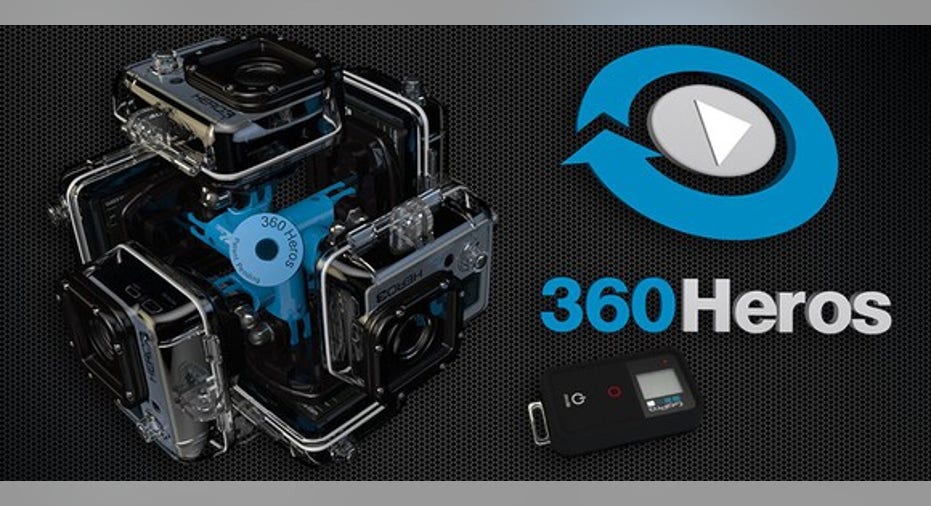6 Things You Didn't Know About GoPro, Inc.

Investors might be familiar with the rise and fall of GoPro (NASDAQ: GPRO), which both occurred in less than three years. The company went public in June 2014 at $24, surged to nearly $90, then plunged into the single digits as competitors flooded the market and its sales growth slowed to a crawl.
GoPro tried to break out of its rut, but a streak of terrible product launches, like the overpriced Session and the faulty Karma drone, undermined consumer and investor confidence. Those are the key factors that sank GoPro stock, but investors might not be familiar with these six lesser-known facts about the company.
Image source: GoPro.
1. The "seashell story" wasn't that simple
A commonly circulated story about Nick Woodman is that the future GoPro founder and his wife sold seashell jewelry and belts from of the back of his van to raise enough cash to launch his company. Woodman and his wife raised $30,000 thisway, but it isn't really a humble "rags to riches" beginning, as some GoPro fans believe.
The bulk of GoPro's start-up capital actually came from a $235,000 investment from Woodman's parents. Nick's father, Dean Woodman, is the co-founder of investment bank Robertson Stephens. Dean's ex-wife and Nick's mother, Concepcion Socarras, remarried Irwin Federman, a general partner in venture capital firm U.S. Venture Partners, in 1992. Woodman relied heavily on his parents' VC connections tosecure additional funding during GoPro's start-up days.
2. Woodman's previous two start-ups failed
GoPro is actually the third company Woodman founded. The first company was a website calledEmpowerAll.com, which attempted to sell electronic goods online with minimal markups. That start-up, like many e-commerce efforts of the late 1990s, quickly flopped.
After that failure, Woodman founded Funbug -- a gaming and marketing platform that gave users a chance to win cash prizes -- in 1999. Woodman raised $3.9 million from investors whom he met during a stint as a private equity tech analyst, but the start-up went under two years later as the dot-com bubble burst.
3. Woodman built the first GoPro with his mom's sewing machine
Woodman came up with the idea of a wearable camera while surfing in Australia and Indonesia. After fastening a 35mm camera to his wrist with a large rubber band, Woodman realized that he could market thedevice to surfers and other outdoor enthusiasts.
After returning home, Woodman built a prototype camera in his bedroom by connecting a 35mm camera to rubber bands and surfboard leashes. The main tools he used were a drill and his mother's sewing machine.
4. Cheaper camera makers use the same hardware as GoPro
Woodman's early design, while innovative, highlighted a key flaw in GoPro's business model -- the company was really just putting existing wide angle cameras into smaller wearable cases. As a result, it became easy to create GoPro clones by simply putting the same hardware components into a case and selling them at a lower price.
For example, Xiaomi-backed Yi Technology's 4K Action Camera used a comparable Sony image sensor and AmbarellaSoC as GoPro's Hero 4 Black -- but it only cost half asmuch. As other companies started using similar components, GoPro started losing its grip on the premium market.
5. Foxconn was one of GoPro's biggest investors
After seeing scuba divers use GoPro's cameras, Foxconn (NASDAQOTH: FXCOF) CEO Terry Gou had his company buy an 8.88% stake in thestart-up at $17.08 per share. At the time, it seemed like Gou would take a seat on GoPro's board and form strategic manufacturing partnerships with the company.
However, Woodman and Gou reportedly didn't see eye to eye on the future of GoPro, and Foxconn gradually reduced its stake to about 6% by late 2015. That move turned out to be a smart move, since the stock subsequently plunged to the single digits by late 2016.
6. It copied another company, then sued it
GoPro launched its six-camera Omni VR rig lastAugust, but that design was liberally "borrowed" from other companies like 360Heros -- which launched similar rigsback in 2013. Investors might have expected 360Heros to sue GoPro, just as C&A Marketing's Polaroid sued GoPro over the similarities between the Session and its Cube action camera in late 2015.
Image source: 360RIZE/360Heros.
However, the opposite happened -- GoPro decided to sue360Heros over trademark infringement last April, claiming that its use of "Heros" in its name misled consumers to believe that the two companies were affiliated. 360Heros subsequently renamed the company 360RIZE.
The key takeaways
These six facts reveal Woodman's motivations and weaknesses, and they indicate that GoPro's cameras are easy to clone, and the company is following instead of innovating. Those factors don't necessarily matter as much as GoPro's year-over-year growth in camera sales or the success of its Karma drone, but they add a few interesting layers to the debates about the company's future.
10 stocks we like better than GoProWhen investing geniuses David and Tom Gardner have a stock tip, it can pay to listen. After all, the newsletter they have run for over a decade, Motley Fool Stock Advisor, has tripled the market.*
David and Tom just revealed what they believe are the 10 best stocks for investors to buy right now...and GoPro wasn't one of them! That's right -- they think these 10 stocks are even better buys.
Click here to learn about these picks!
*Stock Advisor returns as of February 6, 2017.
Leo Sun has no position in any stocks mentioned. The Motley Fool owns shares of and recommends AMBA and GoPro. The Motley Fool has the following options: short January 2019 $12 calls on GoPro and long January 2019 $12 puts on GoPro. The Motley Fool has a disclosure policy.



















